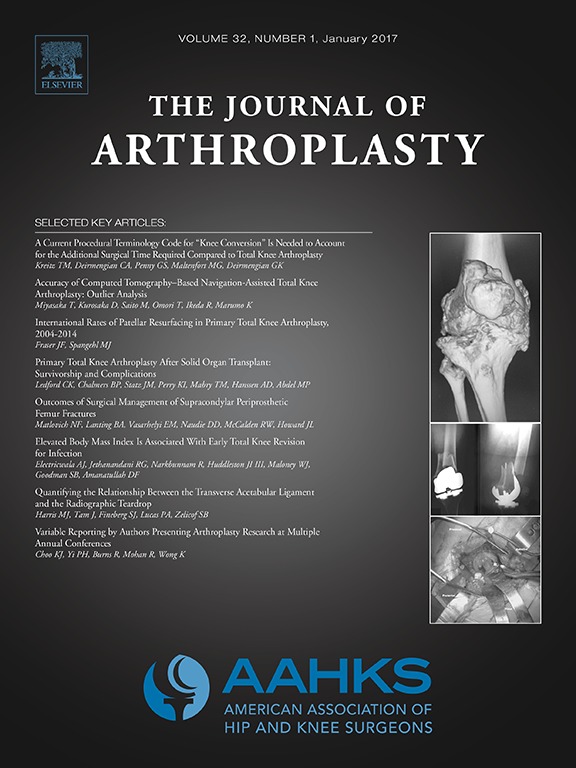
ARTHROPLASTY
Influences of route of acetaminophen administration and periarticular liposomal bupivacaine in TKA
J Arthroplasty. 2018 Jul;33(7S):S136-S141. doi: 10.1016/j.arth.2018.02.088211 patients scheduled for total knee arthroplasty were randomized to one of three multimodal analgesia regimens: oral acetaminophen and periarticular infiltration with a standard knee injection cocktail, oral acetaminophen and periarticular infiltration with liposomal bupivacaine, and intravenous acetaminophen and periarticular infiltration with a standard knee injection cocktail. Primary outcomes included pain scores, narcotic consumption, and opioid-related adverse events. Results demonstrated no significant differences in pain scores and opioid-related side-effects between the three groups, while total narcotic consumption within the first 24 hours was significantly greater in the group administered liposomal bupivacaine compared to the other two groups.
Unlock the full ACE Report
You have access to {0} free articles per month.Click below to unlock and view this {1}
Unlock NowCritical appraisals of the latest, high-impact randomized controlled trials and systematic reviews in orthopaedics
Access to OrthoEvidence podcast content, including collaborations with the Journal of Bone and Joint Surgery, interviews with internationally recognized surgeons, and roundtable discussions on orthopaedic news and topics
Subscription to The Pulse, a twice-weekly evidence-based newsletter designed to help you make better clinical decisions
Exclusive access to original content articles, including in-house systematic reviews, and articles on health research methods and hot orthopaedic topics
Or upgrade today and gain access to all OrthoEvidence content for just $1.99 per week.
Already have an account? Log in


Subscribe to "The Pulse"
Evidence-Based Orthopaedics direct to your inbox.
{0} of {1} free articles
Become an OrthoEvidence Premium Member. Expand your perspective with high-quality evidence.
Upgrade Now












































































